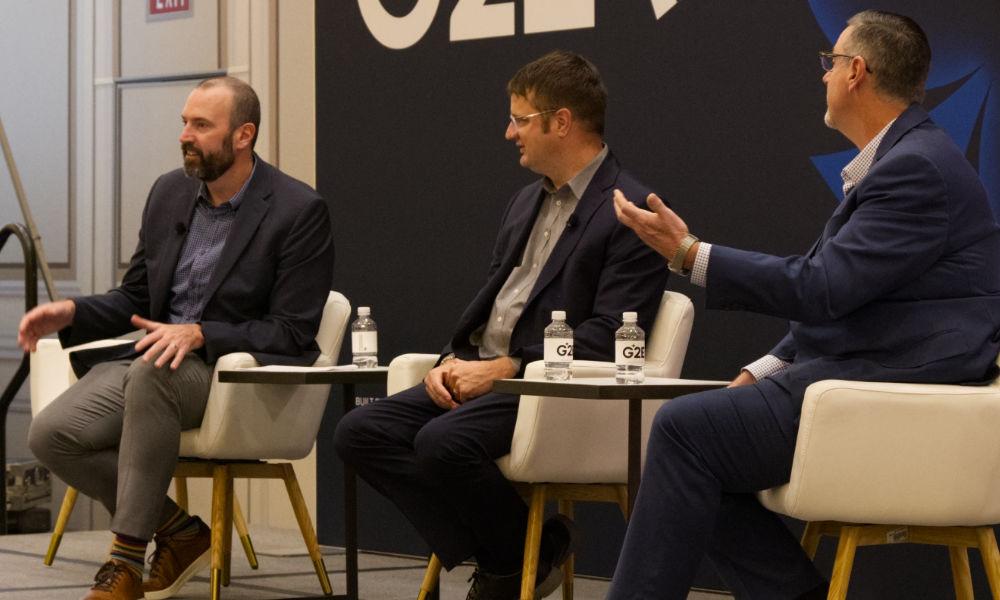“The best thing that table games took from slots was ‘life-changing’ jackpots.” That statement came from Douglas Vogelei, the VP of gaming at Mohegan Sun during a Monday-morning panel at G2E. The focus of the session was on how progressive technology is changing table game play.
Panelist Lee Simonson, table games director at Casino Arizona and Talking Stick Resort, along with moderator Jon Hanlin, president of global tables at Light & Wonder, agreed that many players love these optional bets to hit the large jackpots. Simonson cited two recent million-dollar-plus jackpots that hit at his properties in Arizona, which not only generated great publicity, but also attracted new and younger players to the games.
Hanlin noted that it’s also important to have good reserves and reset values for the progressive meters once the big jackpots hit to make sure that players aren’t discouraged from continuing to play.
All stressed that a critical element of these new progressive side bets and carnival games is good dealer training and supervision. This is especially important as it relates to maintaining acceptable game speed (hands per hour).
Simonson said, “Training your staff is critical. These new features do require some manual decisions and human error can sneak in there. As expected, training becomes more important when a big one (jackpot) hits.”
He added, “The relationship between dealers and players with big progressives is also very important. When you have a shot at $300,000 $400,000 $500,000, even the near misses get folks excited.”
“Training the staff can be difficult,” said Vogelei, “since they (the big jackpots) don’t hit that often. It’s important to have a checklists in the pit. When you have a $1.6 million jackpot on the line, you need to know how to deal that game.”
“The dealers are the ones that sell it,” he said referring to the optional side bets. “In that regard, we also have to understand how the player can tip the dealer. If that’s not there, they won’t sell the game. Overall, it’s exciting for everyone when they have the potential for a huge jackpot.”
Near the end of the session, Hanlin asked the two panelists what they wanted to see for the future from this progressive trend. Simonson was quick to say, “We need automated rating systems like they have in slots. It’s very important to properly reward our players. We know that everyone is working on it, but we’re not there yet.”

Vogelei wanted to see “more evolved paytables, not just a concentration of large meters, but also smaller meters that feed lower jackpots. That will make the games perform better.”
One other question asked by Hanlin was, “How do you balance new games against traditional table games?”
Both panelists stressed that it was a matter of knowing your players and, as Simonson said, “get the proper mix of no-frill blackjack and craps, along with options for that the newer players are seeking.”
Vogelei stressed, “We don’t want to slow the game with too many side bets, especially with some of our purists. Those folks want more decisions per hour and some of these new options bug the traditionalists.”
That said, all were in agreement that progressive technology has brought excitement to the pit and new players to table games.



